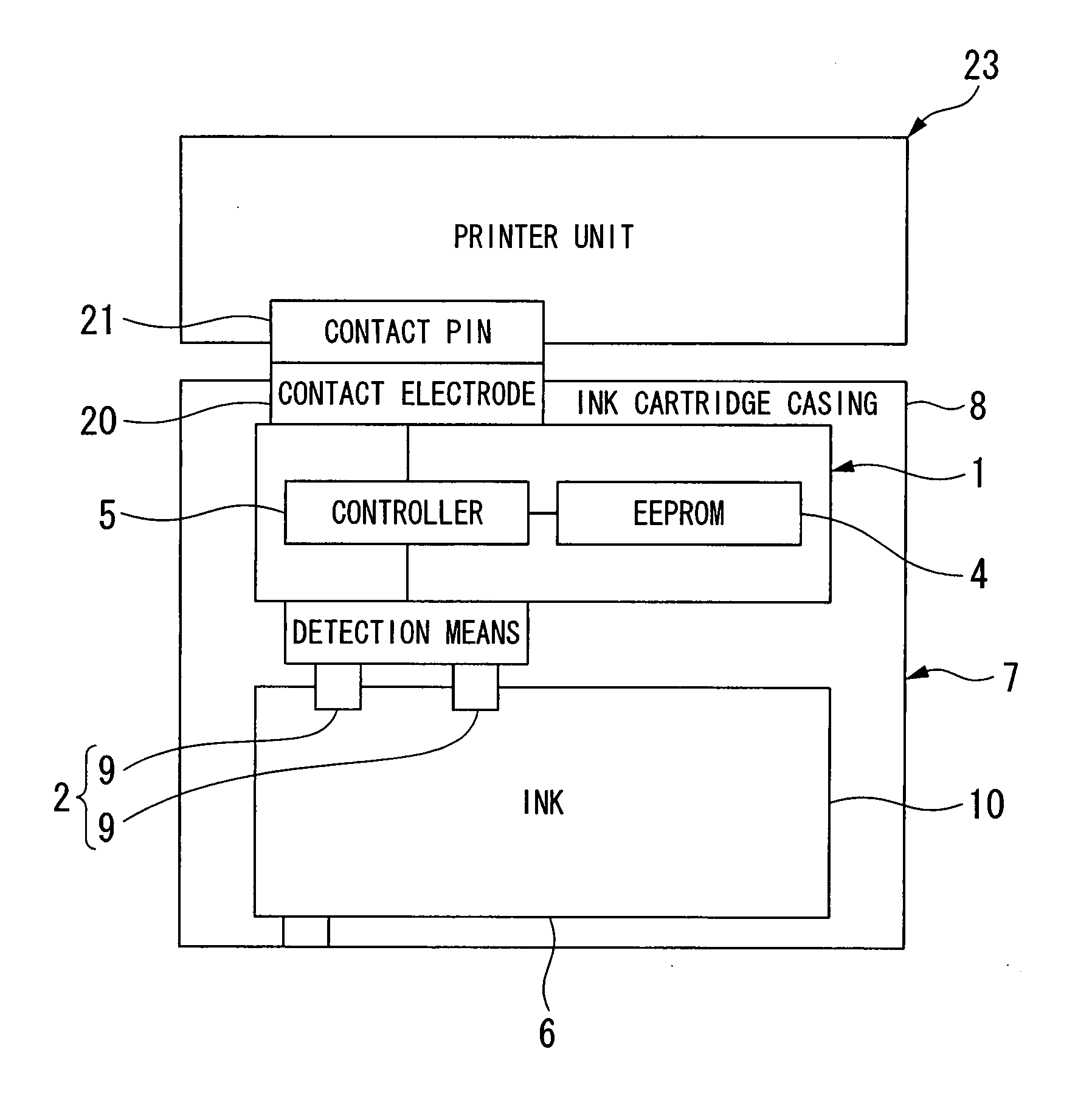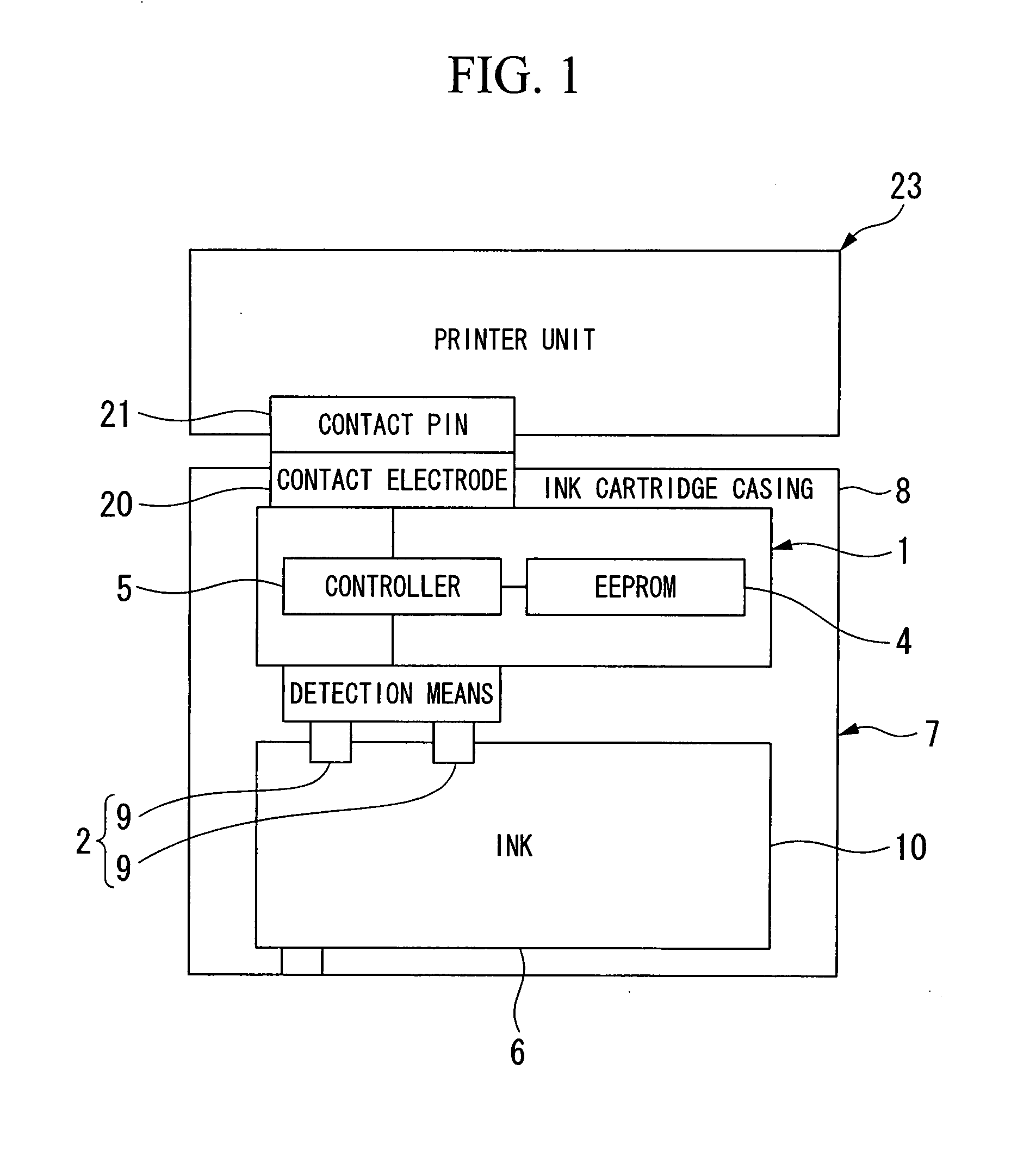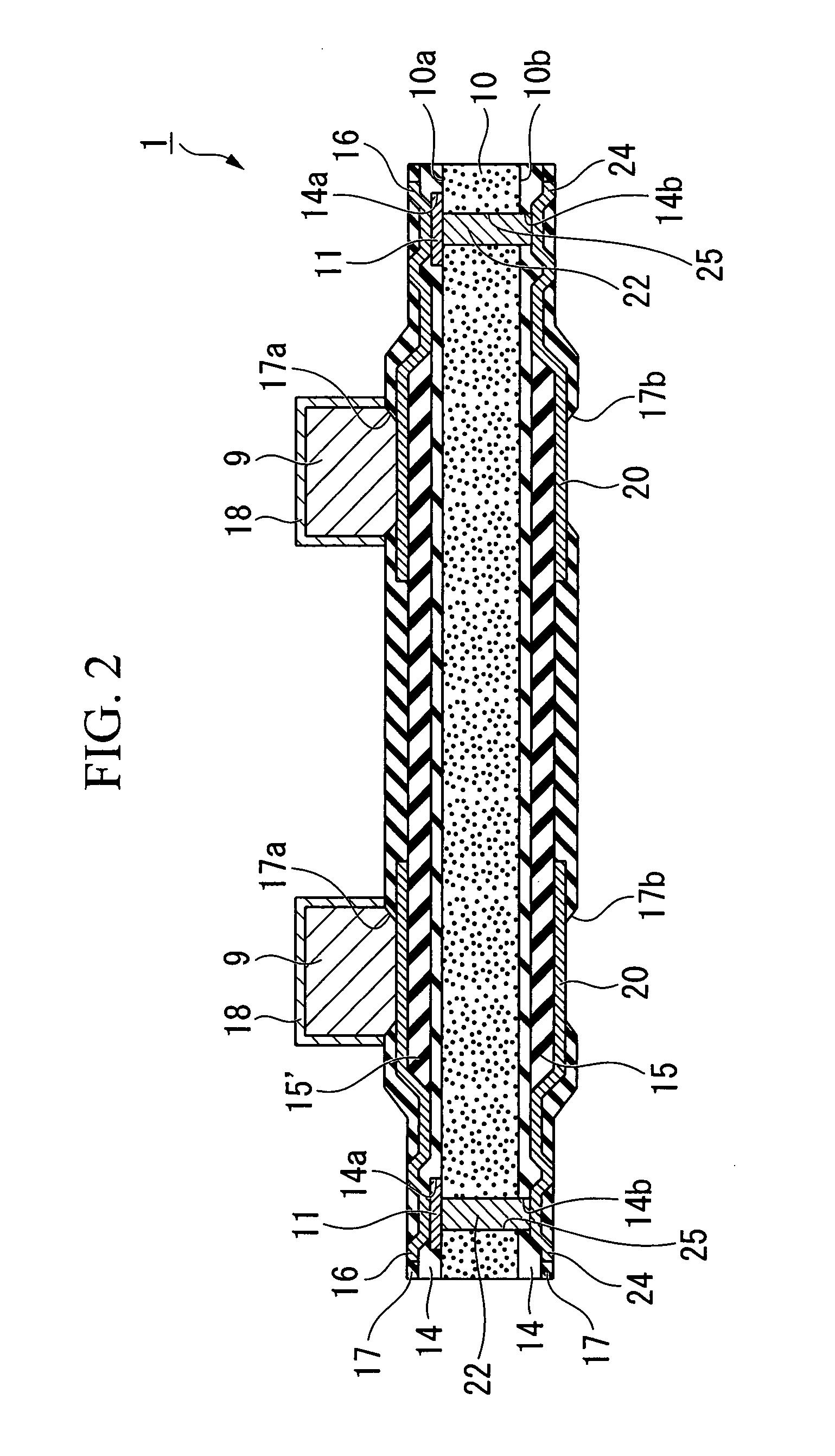Semiconductor device, ink cartridge, and electronic device
a technology of ink cartridges and semiconductors, applied in the direction of testing/measurement of semiconductor/solid-state devices, printing, electrical equipment, etc., can solve the problems of complex sensor structure, waste of remaining ink, and errors in the amount of ink consumed, and achieve high reliability and high-quality
- Summary
- Abstract
- Description
- Claims
- Application Information
AI Technical Summary
Benefits of technology
Problems solved by technology
Method used
Image
Examples
first embodiment
[0091]FIG. 2 is a cross-sectional view of a semiconductor device of the invention.
[0092]FIG. 3 is an exterior view of a first embodiment of a semiconductor device of the invention.
[0093]In these diagrams, reference numeral 1 represents a semiconductor device having a wafer level chip scale package (W-CSP) structure.
[0094]The semiconductor device 1 includes liquid contact electrodes 9 (detection electrodes), a connection electrodes 20 (contact electrodes), an EEPROM 4 (storage circuit), and a controller 5 (control circuit), which are provided on a rectangular semiconductor substrate 10.
[0095]The liquid contact electrodes 9 detect a remaining amount of ink.
[0096]The connection electrodes 20 transmit and receive information to or from the contact pin groups 21 of the printer unit 23.
[0097]The EEPROM 4 stores ink information.
[0098]The controller 5 collectively controls the liquid contact electrodes 9, the connection electrodes 20, and the EEPROM 4.
[0099]The semiconductor substrate 10 is...
second embodiment
[0187]Subsequently, a second embodiment will be described with reference to FIG. 5.
[0188]In FIG. 5, parts corresponding to those in FIGS. 1 to 3 are represented by like reference numerals, and are not repetitiously explained.
[0189]Reference numeral 41 represents a semiconductor device of the invention.
[0190]This embodiment differs from the first embodiment in that parts of the relocation interconnections 16 exposed via the openings 17a in the protective layer 17 over the active element formation face 10a are used as liquid contact electrodes 12 (detection electrodes).
[0191]In this embodiment, ink information is detected when the exposed parts of the relocation interconnections 16 are wetted by ink infiltrating into the openings 17a.
[0192]To achieve this, a plated layer of metal having excellent chemical resistance is formed over the relocation interconnections 16 exposed through the openings 17a in the same manner as described above.
[0193]In this embodiment, a Ni-p+Au plated film (...
PUM
 Login to View More
Login to View More Abstract
Description
Claims
Application Information
 Login to View More
Login to View More - R&D
- Intellectual Property
- Life Sciences
- Materials
- Tech Scout
- Unparalleled Data Quality
- Higher Quality Content
- 60% Fewer Hallucinations
Browse by: Latest US Patents, China's latest patents, Technical Efficacy Thesaurus, Application Domain, Technology Topic, Popular Technical Reports.
© 2025 PatSnap. All rights reserved.Legal|Privacy policy|Modern Slavery Act Transparency Statement|Sitemap|About US| Contact US: help@patsnap.com



